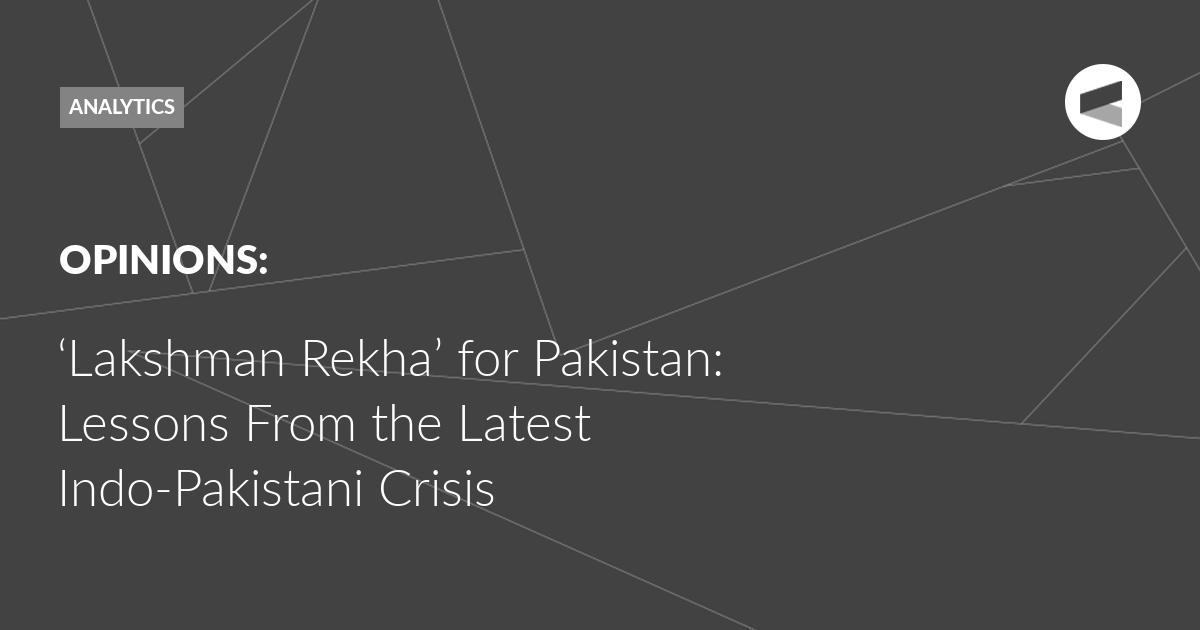The recent clash between India and Pakistan was immediately dubbed the “drone war” by the press: for the first time, both sides were actively using UAVs in combat. Leyla Turayanova writes about the reasons for the tensions and explains how Russia unwittingly benefited from the latest Indo-Pakistani escalation.
After the failure of attempts to normalise Indo-Pakistani relations at the beginning of Narendra Modi’s first term as prime minister, the situation during periods of heightened tension has developed according to a predictable scenario: a large-scale terrorist attack in Indian Kashmir, followed by retaliatory strikes against Pakistan, followed by Islamabad responding with de-escalation. In 2016, India carried out “surgical strikes” against terrorists in the Pakistani part of Kashmir, and in 2019, it launched an airstrike on the training camp of the Jaish-e-Mohammed militant group
in Balakot in the Pakistani province of Khyber Pakhtunkhwa.
During the latest crisis, provoked by the terrorist attack in Pahalgam, events generally followed this pattern. Since India and Pakistan were not interested in escalation, the military forces of the two countries managed to agree on a ceasefire fairly quickly. At the same time, both sides managed to “save face” and declare victory over the enemy.
However, there were also significant differences. In terms of the weapons used, the number of targets attacked, and the geographical scope, India’s retaliatory strike was much larger than in 2016 and 2019. On May 7, 2025, as part of Operation Sindoor, India carried out 24 strikes on nine terrorist infrastructure targets, five of which were in the Pakistani part of Kashmir and four in the Pakistani province of Punjab. According to Indian media reports, the strikes were carried out by Rafale fighter jets using Scalp (Storm Shadow) air-launched cruise missiles and Hammer guided bombs, as well as kamikaze drones (loitering munitions). Pakistan’s response was proportionate, which led to further escalation. On the fourth day, after an exchange of missile and drone strikes, as well as artillery shelling on the line of control in Kashmir, the fighting was halted.
For the first time, the escalation was accompanied by a broad campaign by New Delhi to mobilise public opinion abroad in support of its actions. Central to this campaign was the decision to send seven delegations, comprising MPs and retired diplomats, to 32 countries in Europe, Asia, America, the Middle East, and Africa, including Russia and the US, as well as to EU headquarters in Brussels, to disseminate information about Operation Sindoor and convey India’s position to the international community. Each delegation included representatives of both the ruling National Democratic Alliance and opposition parties, in a move to emphasise the inter-party consensus in India on a “zero tolerance policy towards terrorism.” Following New Delhi’s announcement, Islamabad also announced that it would send two high-level delegations to Washington, New York, London, Brussels, and Moscow to “expose Indian propaganda.”
The intensity of the information war has also reached unprecedented levels, with social media flooded with fake news exaggerating the successes of one side’s army and the losses of their enemy. So far, there is no evidence that this has affected the development of the conflict. Nevertheless, the question arises as to whether such manipulations could influence decisions made in New Delhi and Islamabad in the future, given that public opinion in both countries encourages their leaders to take decisive action during each escalation.
The “Lakshmana Line” for Pakistan
On May 12, after the end of hostilities, Modi outlined the main elements of New Delhi’s future strategy toward Islamabad in an address to the nation. He later called it the “Lakshman Rekha” – the “Lakshmana line” – against terrorism (in the Indian epic Ramayana, a magical line was drawn by Lakshmana to protect Rama’s wife Sita; in Indian political discourse, it means a symbolic red line that cannot be crossed).
First, Modi promised an inevitable response to a potential terrorist attack against India. “We will give a befitting response on our terms only. We will take strict action at every place from where the roots of terrorism emerge,” the prime minister said, thus asserting New Delhi’s right to strike terrorist facilities, including deep inside Pakistani territory.
Second, Modi indicated that New Delhi would not tolerate “nuclear blackmail” from Islamabad. In other words, Pakistan’s possession of nuclear weapons is not considered an obstacle to conventional strikes.
Third, the prime minister emphasised that New Delhi will not distinguish between a government that sponsors terrorism and the organisers of terrorist attacks. India’s approach to cross-border terrorism involves imposing costs on Pakistan; given that New Delhi’s military response to terrorist attacks has been escalating, it is possible that in the future the line between strikes on terrorist facilities and Pakistani military targets will be blurred.
Fourth, Modi stated that negotiations with Pakistan could only proceed on issues of terrorism and “Pakistan-occupied Kashmir.” “Terror and talks cannot go together. Terror and trade cannot go together. Water and blood cannot flow together,” he said.
Finally, the prime minister justified the use of force in terms of the country’s aspirations to become a global power. “Every Indian should be able to live in peace, and can fulfil the dream of Viksit Bharat (Developed India). For this, it is very necessary for India to be powerful. And it is also necessary to use this power when required. And in the last few days, India has done just that,” he said.
In essence, this doctrine does not bring anything fundamentally new to Indian politics, representing a development and consolidation of the approaches to Pakistan that have already been established under the Modi government. For Indo-Pakistani relations, with all bilateral ties frozen and neither side showing any interest in establishing a dialogue, this portends further deterioration. The question also remains open as to whether the concept of controlled escalation, which has worked so far, could fail in the future.
In the long term, a new factor that could lead to escalation is India’s use of the water issue as leverage against Pakistan. At present, India does not have the technical capabilities to significantly alter the flow of rivers flowing into Pakistan, but with the suspension of the Indus Waters Treaty, New Delhi now has the opportunity to implement large-scale hydrotechnical projects without regard for Islamabad.
The Valdai Discussion Club was established in 2004. It is named after Lake Valdai, which is located close to Veliky Novgorod, where the Club’s first meeting took place.
Please visit the firm link to site






